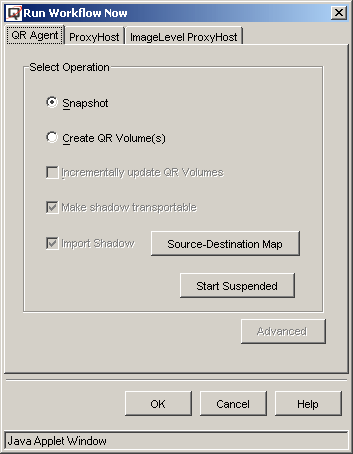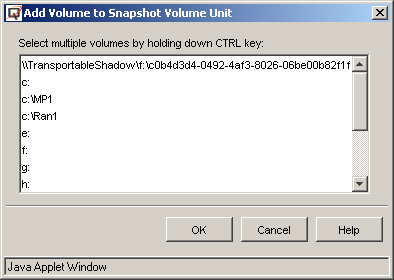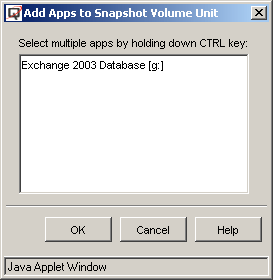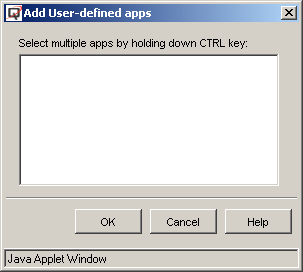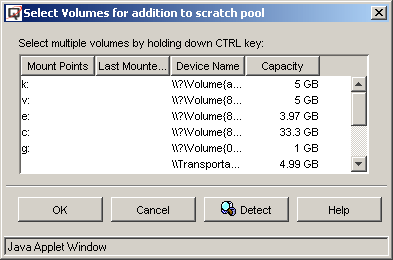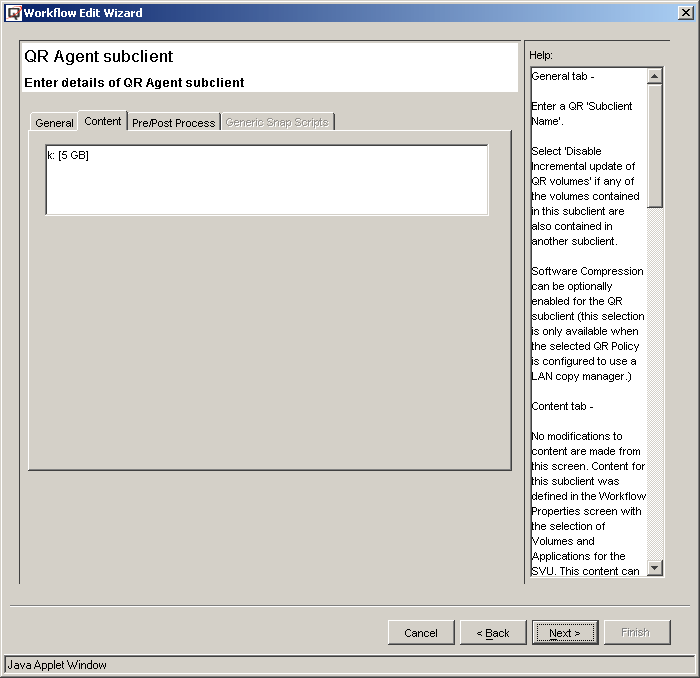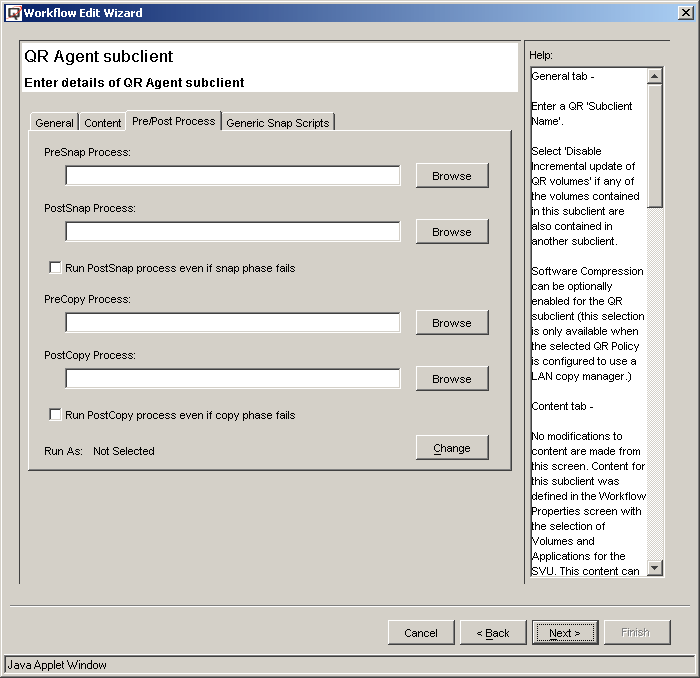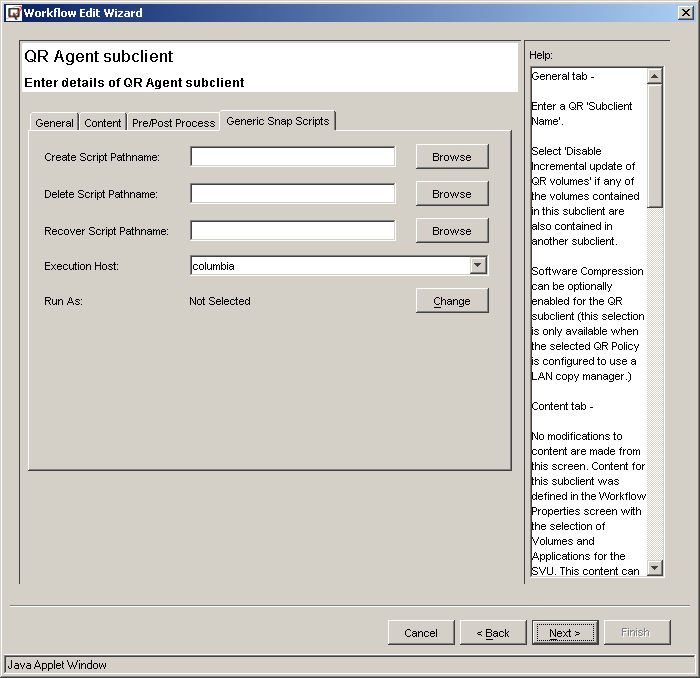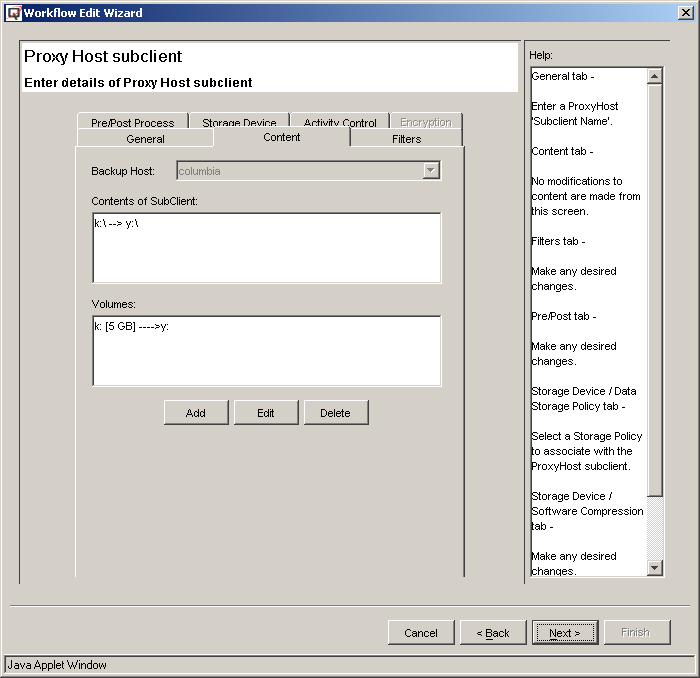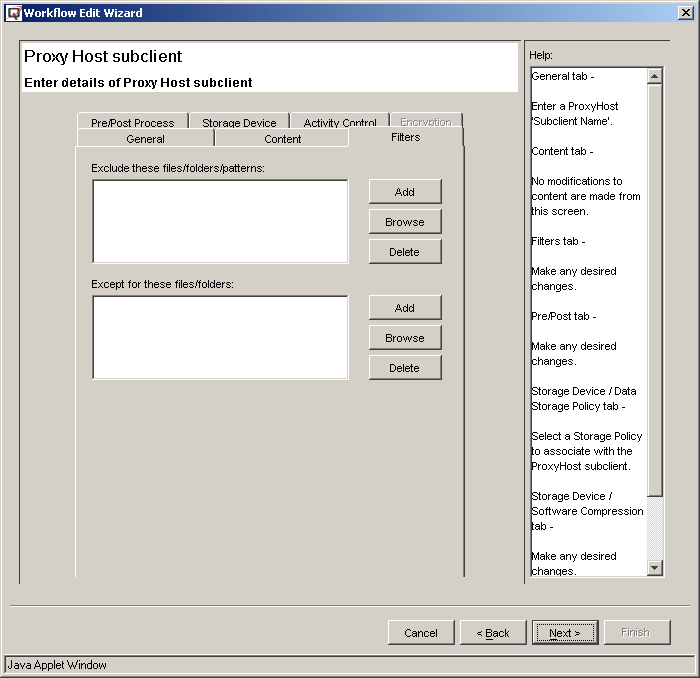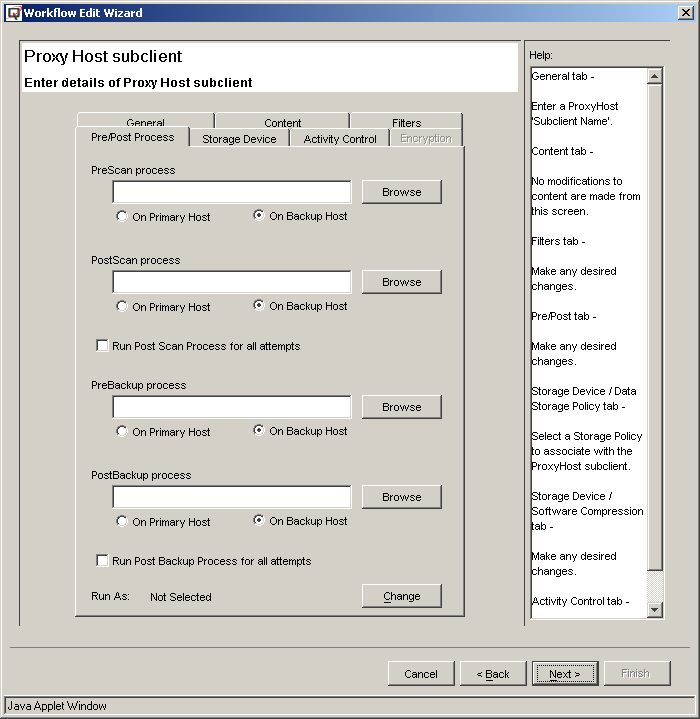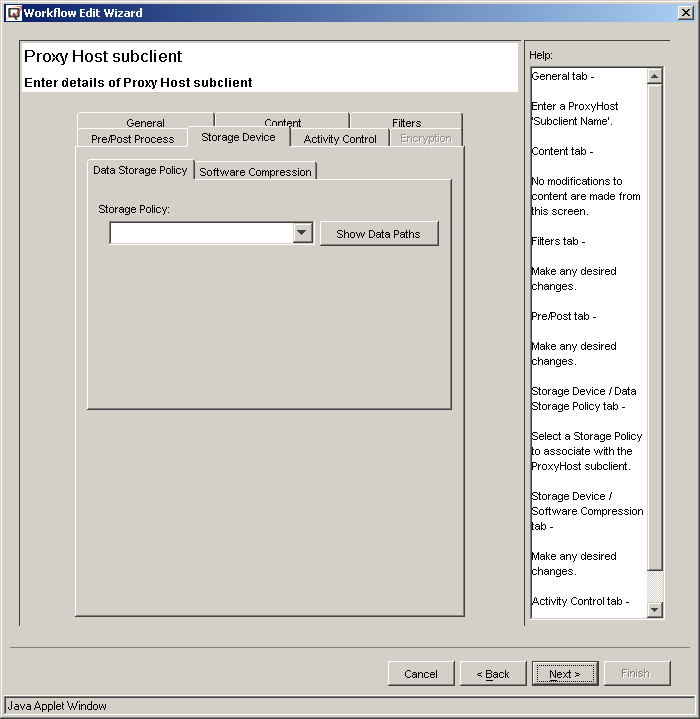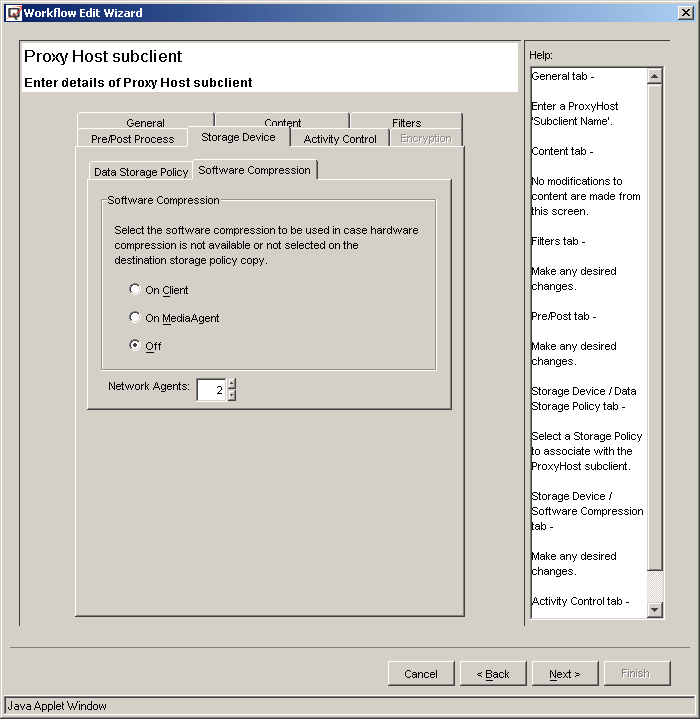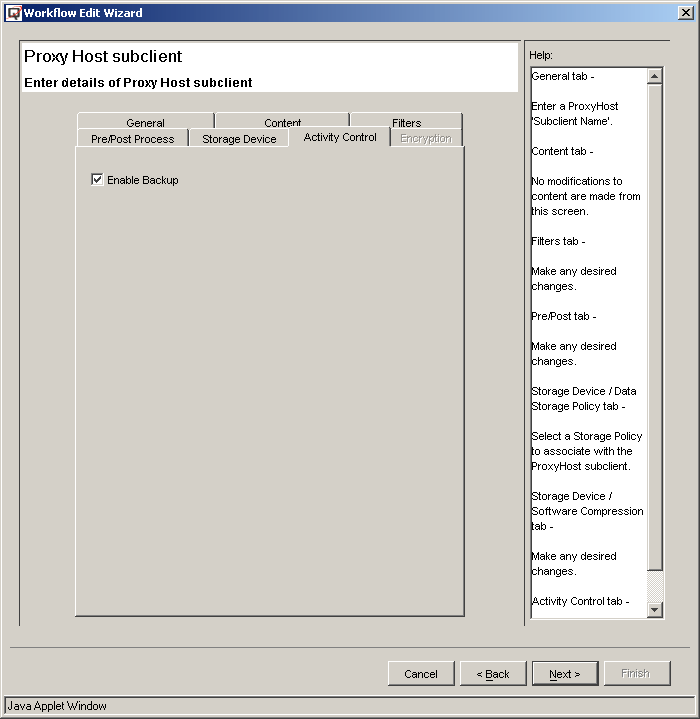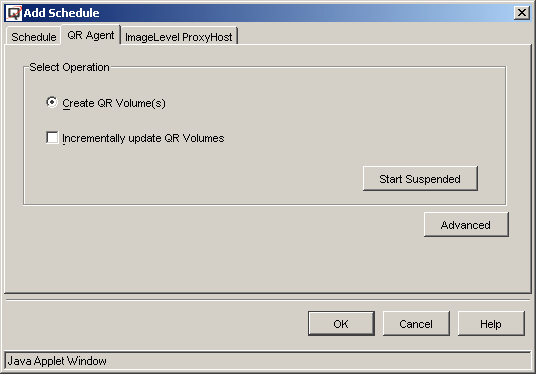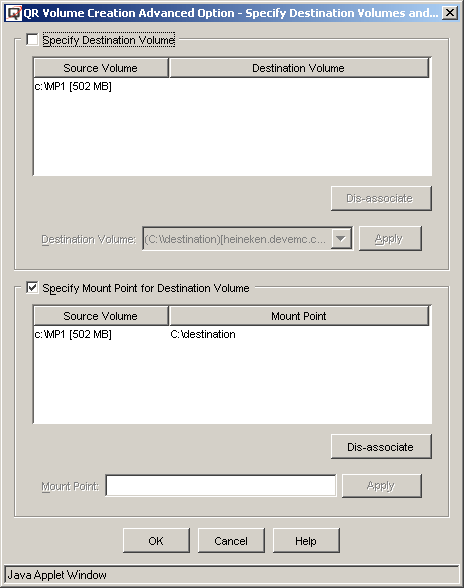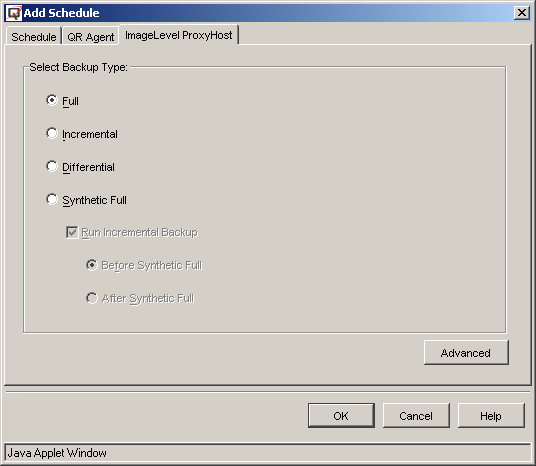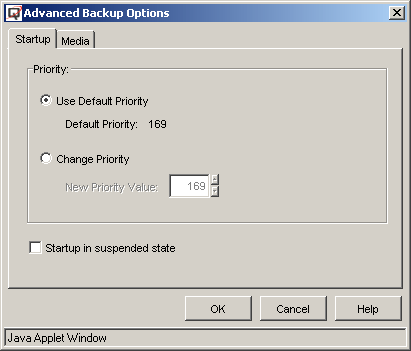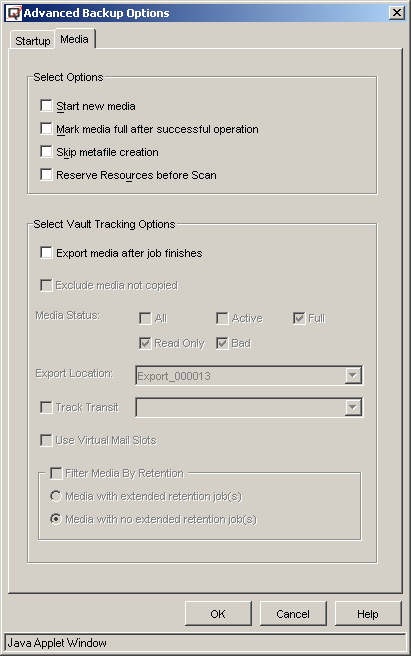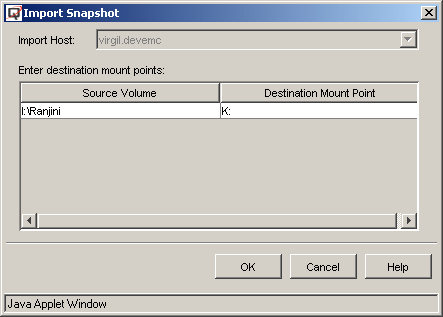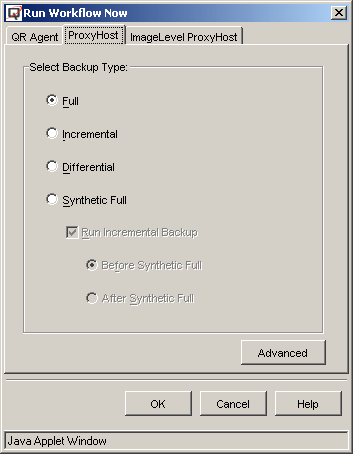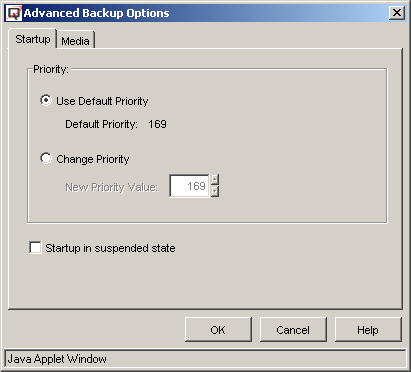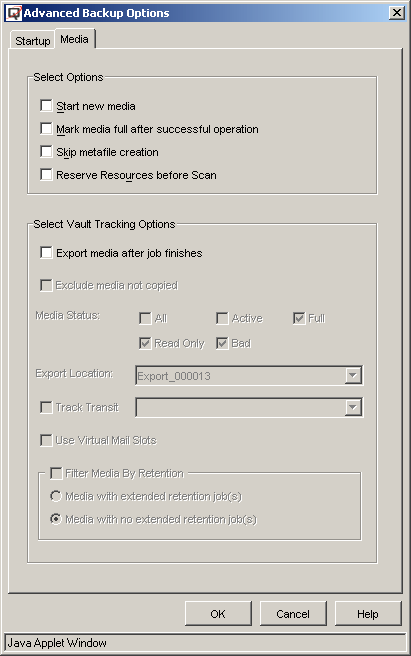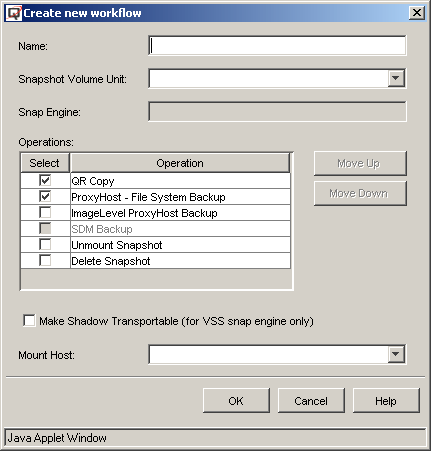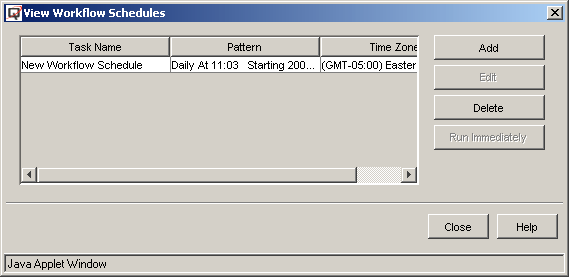Requirements
Creating a new Workflow
- User-defined Application Types that will be part of the Workflow must already be created. See Step 4.
- Generic Enablers that will be used for the Workflow must already be created. See Step 7.
- Suitable Storage Policy(ies) must exist for the iDataAgent(s) that will be part of this Workflow. See Step 8.
Workflow Configuration Wizard Procedures

- Create or edit a Snapshot Management Workflow
- Create or edit QR Policies and Scratch Pools
- Create or edit Snapshot Volume Units
- Create, edit, or delete Schedules for Workflows
- Immediately run a Workflow
Click Next.
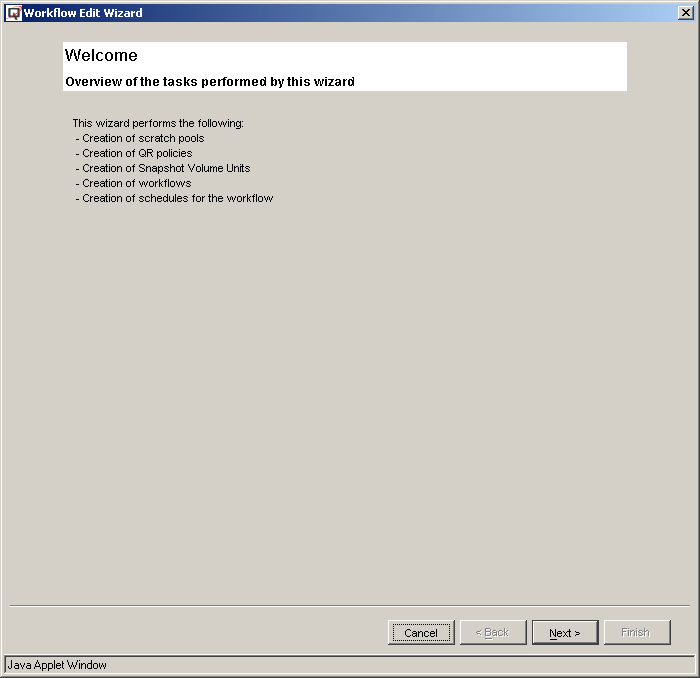
- To create a new Workflow, click Add, and go to Step 4.
- To edit an existing Workflow, select it, click Edit, and go to Step 4.
- To delete an existing Workflow, select it and click Delete, then click Finish.
- To perform any of the following, go to Step 11:
- Add a new Schedule.
- Edit an existing Schedule
- Delete a Schedule
- Run a Schedule immediately
- Run an unscheduled Workflow immediately
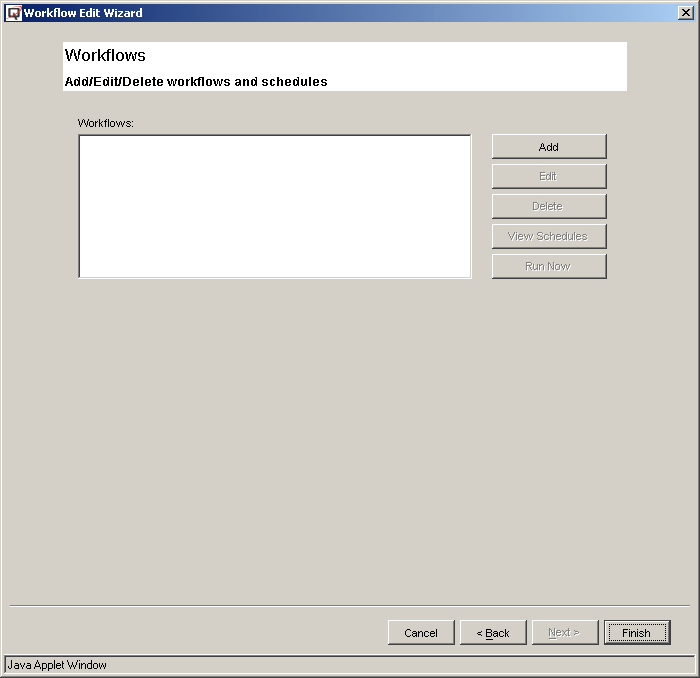
- Enter a Workflow Name.
- Select the Operations to be performed
for this Workflow. QR Copy is always selected, and must be the first
operation. For hardware snapshots you can select to either unmount them
or delete them after all the other operations are run; unmount or delete
must be the last operation. Click the Move Up and Move Down
buttons to arrange the operations in the order in which they are to
be performed.
- Unmount: This will unmount the snapshot, and is preferred for hardware snapshots, unless you have no use for the snapshot after the Workflow completes.
- Delete snapshot: When using a hardware snap engine (SnapView, VSS, Generic Enabler) this will delete the hardware snapshot. A software snap engine (QSnap, VSS) automatically deletes the snapshot at the end of the job, so this operation will not delete the snapshot, but will instead unlock, or release the lock on, the QR volume. Thus, this operation would not normally be selected for a software snap engine.
- Select a Snap Engine from the list. This selection determines which QR Policies are eligible to be used during QR subclient creation.
- Select the Make Shadow Transportable option if a VSS hardware snapshot is being used, and you want to be able to import the snapshot.
- Select a Mount Host, where your QR volumes or hardware snapshots should be mounted.
- Enter an SVU Name.
- Click Add Volume to select from a list of volumes for subclient content. When done, double-click the Destination Mount Point column next to each volume and specify a Mount Point on the Mount Host.
- Click Add App to select from a list of the supported applications on all volumes.
- Click Add User Defined App to select from a list of previously-defined applications.
- Select a Volume from the list and click Delete Volume to remove it.
- Select a Volume from the list and click Delete App to remove an associated application from it.
- Select a Volume from the list and click Remove User Defined App to remove an associated application it.
- Click Detect to open Volume Explorer to detect and configure volumes.
Click Next.
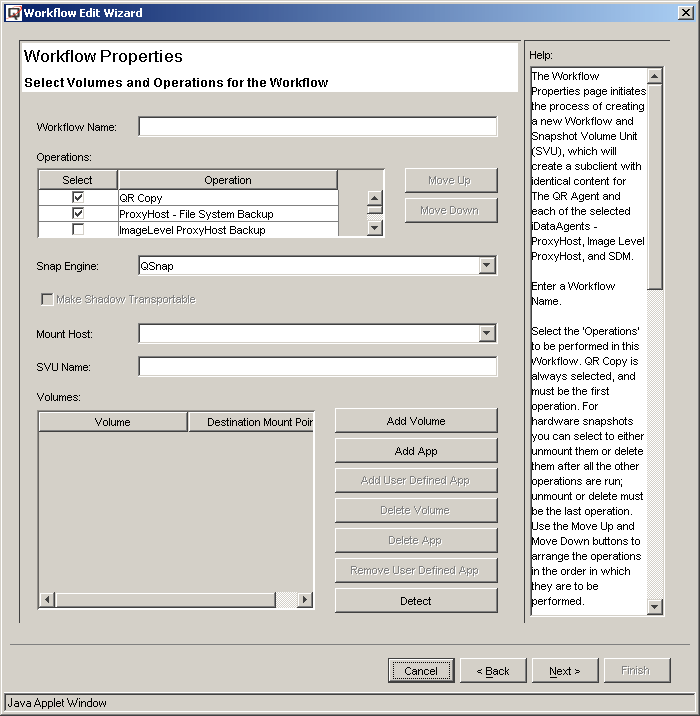
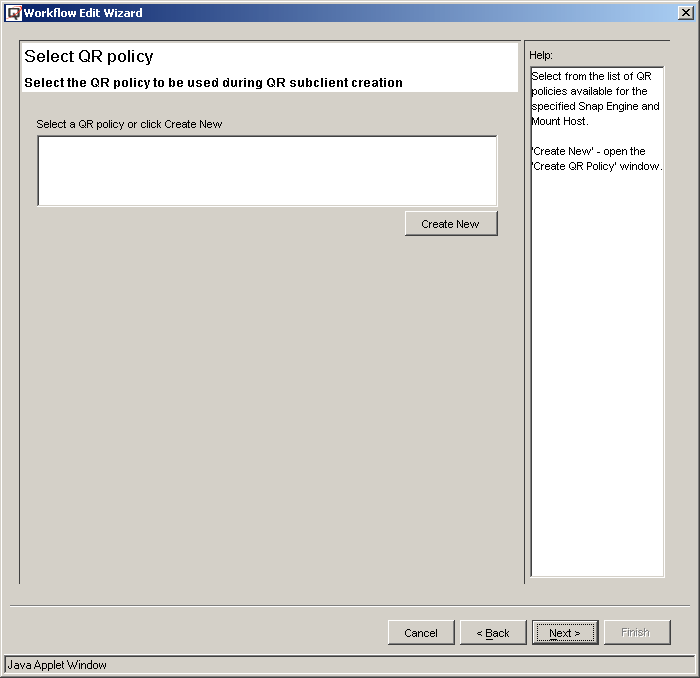
- Enter a QR Policy Name.
- The Snapshot Engine was specified in Step 4 and is not editable here.
- Select Enable QR volume creation if you will perform QR Volume creation or incremental updates. Note that incremental updates cannot be performed if any of the volumes contained in this subclient are also contained in another subclient. (See Step 7.)
- Select the Copy Manager from the list of available Copy Managers on the destination machine.
- Enter a Scratch Pool Name.
- Click Add Volumes to open a list of volumes to select for the Scratch Volume Pool.
Click Next.
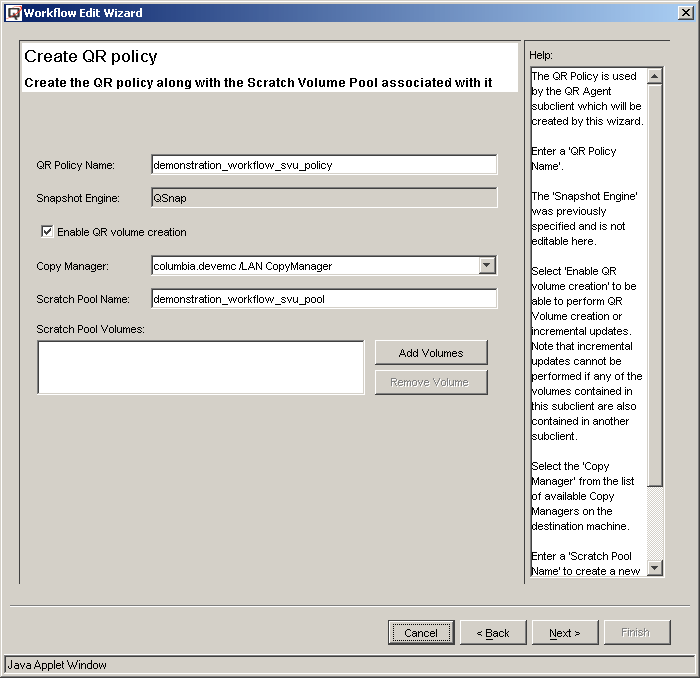
General tab
- Enter a QR Subclient Name.
- If a VSS hardware snapshot has been specified as the Snap Engine in Step 4, and the Make Shadow Transportable option was selected, either select Use Source Host as the Default Import Host, or select a Default Import Host from the list.
- Select Disable Incremental update of QR volumes if any of the volumes contained in this subclient are also contained in another subclient.
- Software Compression can be optionally enabled for the QR subclient (this selection is only available when the selected QR Policy is configured to use a LAN Copy Manager.)
Content tab
- No modifications to content are made here. Content for this subclient was defined in the Workflow Properties screen with the selection of Volumes and Applications for the SVU. This content can be modified after completing this Wizard, using the Manage SVU command. See Create/Edit/Delete a Snapshot Volume Unit (SVU).
Pre/Post Process tab
- Add optional Pre/Post Processes for the QR Agent subclient. (These are batch files or shell scripts that you can run before or after the Snap or Copy phases.) Type the path of each file or shell script, or click Browse to open a window to navigate to it. To run a PostSnap or PostCopy process even if the Snap or Copy phase is killed, fails, completes with errors, or is interrupted due to a media reservation issues, select the appropriate option. Note that if a user suspends or stops the job during the respective phase, or if the job is interrupted during that phase due to Operation Window rules, the Post Process will not run, even if the option has been selected. If either of these two conditions are encountered, and the Post Process is designed to bring a database online, release a snapshot, or execute some other critical process, these tasks must be performed manually.
- Click Change to add or modify the User Account that has permission to run these commands.
- Create Script Pathname - the path of the user-created batch file or shell script to initialize the hardware snapshot, manage the BCV pair, and mount the snapshot.
- Delete Script Pathname - the path of the user-created batch file or shell script to unmount the snapshot and delete the BCV pair.
- Recover Script Pathname - the path of the user-created batch file or shell script to quiesce/unquiesce the application, or launch a hardware-based recovery.
- Select an Execution Host from the list, where the user-created batch files or shell scripts will be run.
- Change - add or modify the account that has permission to run these commands.
Click Next.
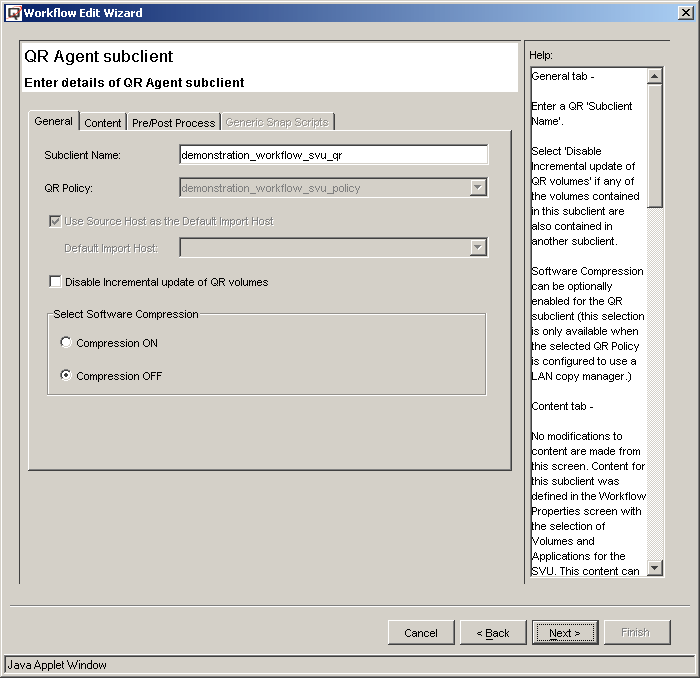
General tab
- Enter a Subclient Name.
Content tab
- No modifications to content are made here. Content for this subclient was defined in the Workflow Properties screen with the selection of Volumes and Applications for the SVU. This content can be modified after completing this Wizard, using the Manage SVU command. See Create/Edit/Delete a Snapshot Volume Unit (SVU).
Filters tab
- Make any desired changes. See Filters for more information.
Pre/Post tab
- Add optional Pre/Post Processes for the iDataAgent subclient. (These are batch files or shell scripts that you can run before or after the Snap or Copy phases.) Type the path of each file or shell script, or click Browse to open a window to navigate to it. To run a PostSnap or PostCopy process even if the Snap or Copy phase is killed, fails, completes with errors, or is interrupted due to a media reservation issues, select the appropriate option. Note that if a user suspends or stops the job during the respective phase, or if the job is interrupted during that phase due to Operation Window rules, the Post Process will not run, even if the option has been selected. If either of these two conditions are encountered, and the Post Process is designed to bring a database online, release a snapshot, or execute some other critical process, these tasks must be performed manually.
Storage Device / Data Storage Policy tab
- You must select a Storage Policy to associate with the subclient.
Storage Device / Software Compression tab
- Make any desired changes. See Client Compression for more information.
Activity Control tab
- Make any desired changes. See Activity Control for more information.
Click Next.
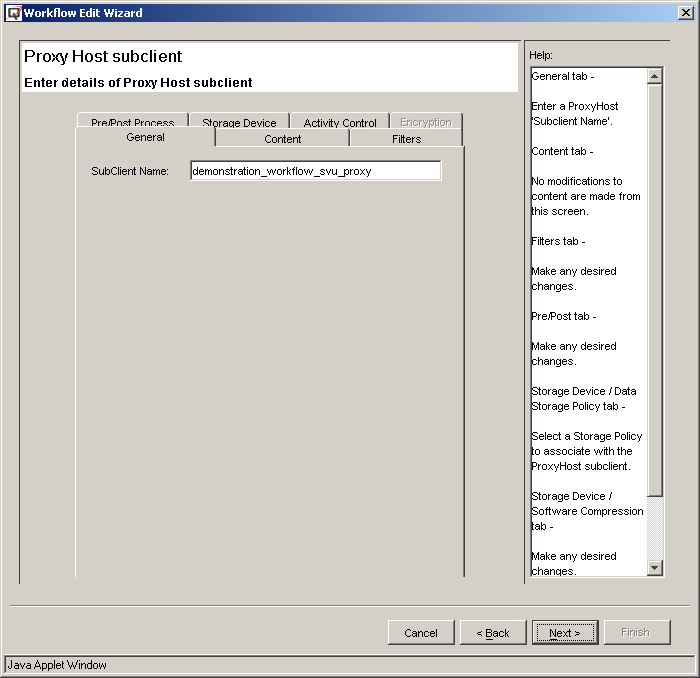
- Click Next if the information presented is correct.
- Click Back to return to previous Wizard screens to make any changes.
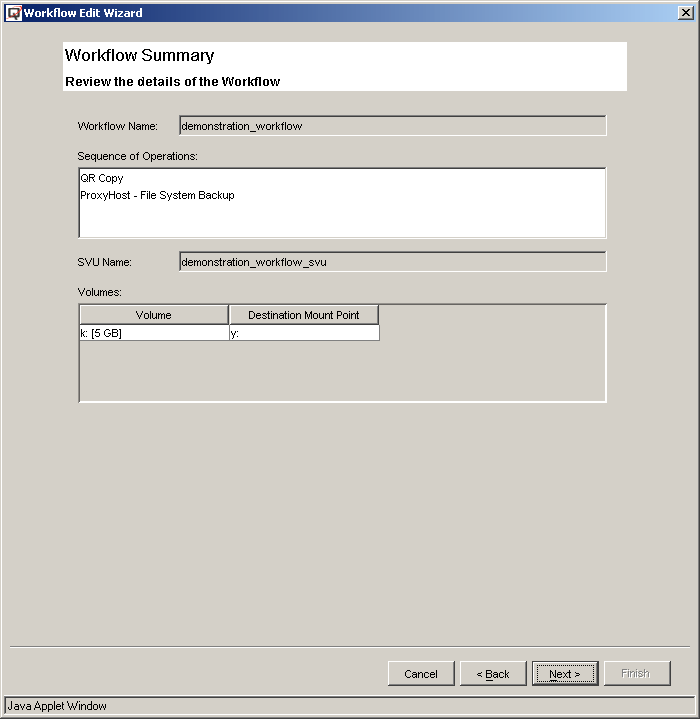
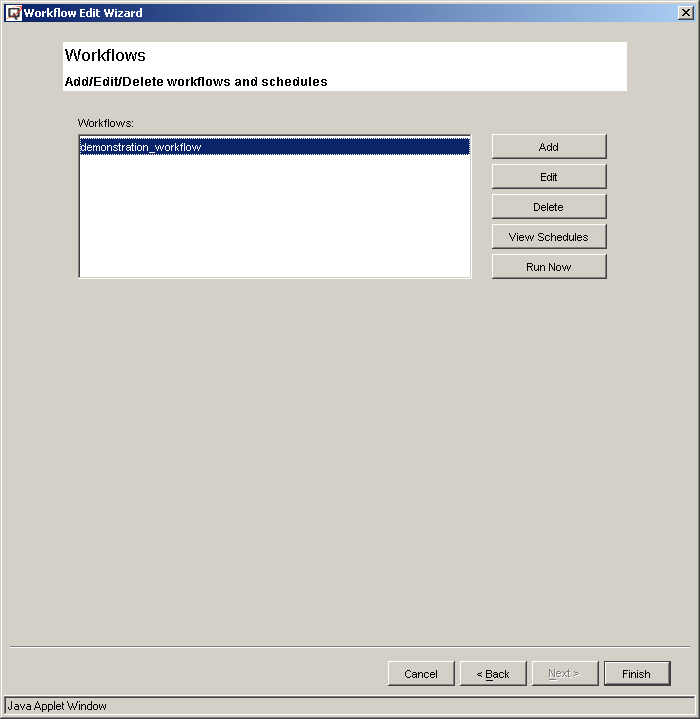
- To create a new Schedule, click Add, and go to Step 12.
- To edit an existing Schedule, select it, click Edit, and go to Step 12.
- To delete an existing Schedule, select it and click Delete. Then click Finish.
- To run a Scheduled Workflow immediately, select the Schedule and click Run Immediately. In the confirmation dialog box, click OK.
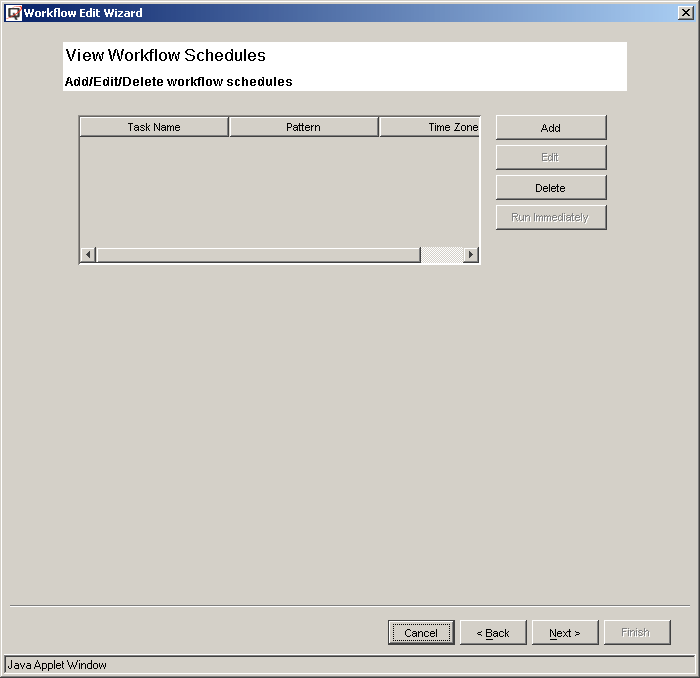
Schedule tab
- Create or edit a Schedule. See Scheduling for more information. A Schedule is required if you want to Create a QR Volume with Incremental Updates.
QR Agent tab
- Select QR Volume Creation options. See Create a QR Volume for more information.
iDataAgent tab(s)
- Select Backup Options. See the following for more information:
When finished, click OK. You will see the Workflows screen again, as shown in Step 10; click Finish.
Go to Step 14.
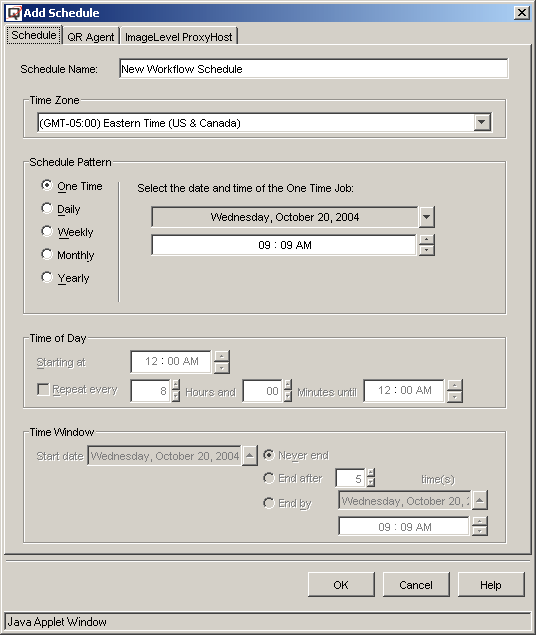
QR Agent tab
- Select QR Volume Creation options. See Create a QR Volume for more information.
- Source-Destination Map
iDataAgent tab(s)
- See the following for more information:
When all options have been configured, click OK.
